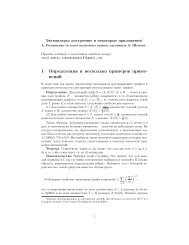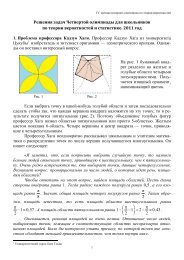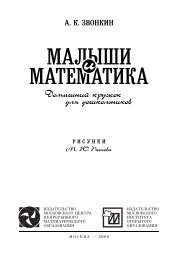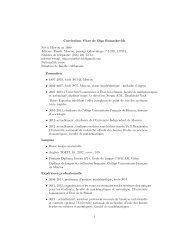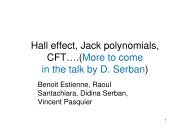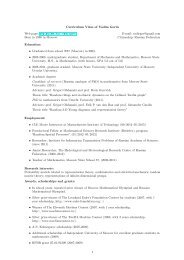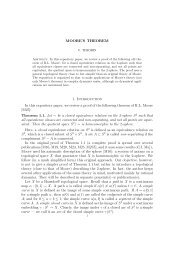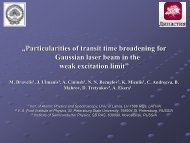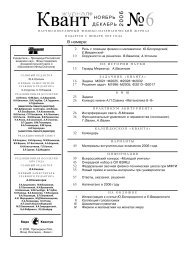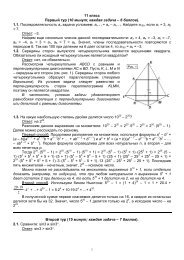a new model of correlated disorder in relaxor ferroelectrics
a new model of correlated disorder in relaxor ferroelectrics
a new model of correlated disorder in relaxor ferroelectrics
You also want an ePaper? Increase the reach of your titles
YUMPU automatically turns print PDFs into web optimized ePapers that Google loves.
X<br />
X<br />
<br />
<br />
<br />
Relaxor-specific component <strong>of</strong> diffuse scatter<strong>in</strong>g (RSDS) should disappear<br />
at high temperature as Pb displacements will become a free un<strong>correlated</strong><br />
movement over the spherical shell<br />
RSDS should disappear under high pressure as Pb ions will be<br />
immobilised <strong>in</strong> the emerg<strong>in</strong>g local m<strong>in</strong>ima on the sphere<br />
RSDS should deform <strong>in</strong> an applied electric field as Pb ions as additional<br />
anisotropy will be created over the displacement shell; features<br />
perpendicular to the field direction should shr<strong>in</strong>k<br />
The naturally created hierarchy <strong>of</strong> displacement patterns <strong>in</strong> space and<br />
their respective lifetimes should result <strong>in</strong> the large spread <strong>of</strong> relaxation<br />
times<br />
The uniform slow fad<strong>in</strong>g <strong>of</strong> polarization <strong>in</strong> switched doma<strong>in</strong> without wall<br />
movement is also <strong>in</strong> l<strong>in</strong>e with our concept.<br />
J. Kreisel, P. Bouvier, B. Dkhil, B. Chaabane, A. Glazer, P. Thomas, T. Welberry, Ferroelectrics<br />
302, 293 (2004)




